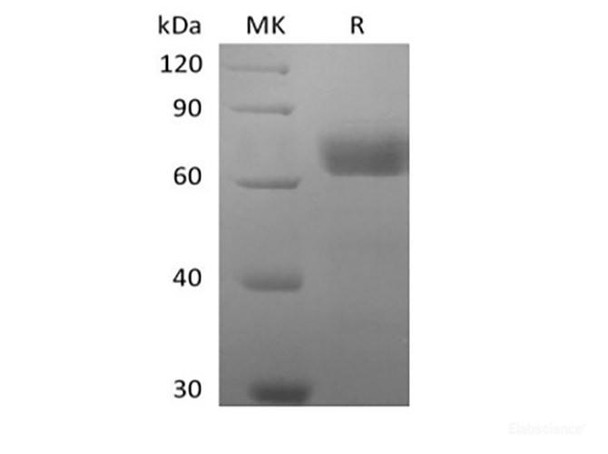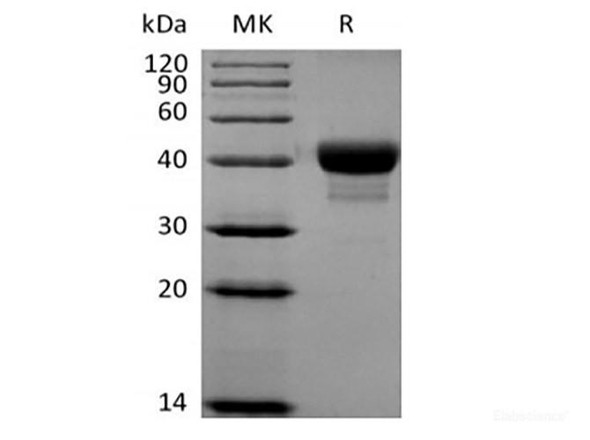Description
| Product Name: | Recombinant Human Butyrophilin Subfamily 2 Member A2/BTN2A2 (C-Fc-Avi) Biotinylated |
| Product Code: | RPES6345 |
| Size: | 20µg |
| Species: | Human |
| Expression Host: | HEK293 Cells |
| Synonyms: | Butyrophilin subfamily 2 member A2, BTN2A2 |
| Mol Mass: | 51.5 kDa |
| AP Mol Mass: | 55-80 kDa |
| Tag: | C-Fc-Avi |
| Purity: | > 95 % as determined by reducing SDS-PAGE. |
| Endotoxin Level: | < 1.0 EU per μg of the protein as determined by the LAL method. |
| Bio Activity: | Testing in progress |
| Sequence: | Gln33-Val237 |
| Accession: | Q8WVV5 |
| Storage: | Generally, lyophilized proteins are stable for up to 12 months when stored at -20 to -80°C. Reconstituted protein solution can be stored at 4-8°C for 2-7 days. Aliquots of reconstituted samples are stable at < -20°C for 3 months. |
| Shipping: | This product is provided as lyophilized powder which is shipped with ice packs. |
| Formulation: | Lyophilized from a 0.2 μm filtered solution of PBS, pH 7.4. Normally 5 % - 8 % trehalose, mannitol and 0.01% Tween80 are added as protectants before lyophilization. Please refer to the specific buffer information in the printed manual. |
| Reconstitution: | Please refer to the printed manual for detailed information. |
| Background: | Butyrophilin 2A2 (BTN2A2) is a widely expressed type I transmembrane glycoprotein that functions as a negative regulator of immune responses. Mature human Butyrophilin 2A2 consisits of a 233 amino acid (aa) extracellular domain with two immunoglobulin-like domains, a 21 aa transmembrane segment, and a 237 aa cytoplasmic domain. Alternative splicing generates additional isoforms of human Butyrophilin 2A2 that lack the first, second, or both Iglike domains as well as isoforms with substitutions and deletions in the cytoplasmic region. Within the immune system, Butyrophilin 2A2 is expressed on thymic epithelial cells, naïve B cells, splenic NK cells, dendritic cells, and peritoneal macrophages and is up-regulated with cell activation. Butyrophilin 2A2 inhibits T cell proliferation and activation and enhances the development of FoxP3+ regulatory T cells. Its up-regulation in the hippocampus is associated with schizophrenia. |






